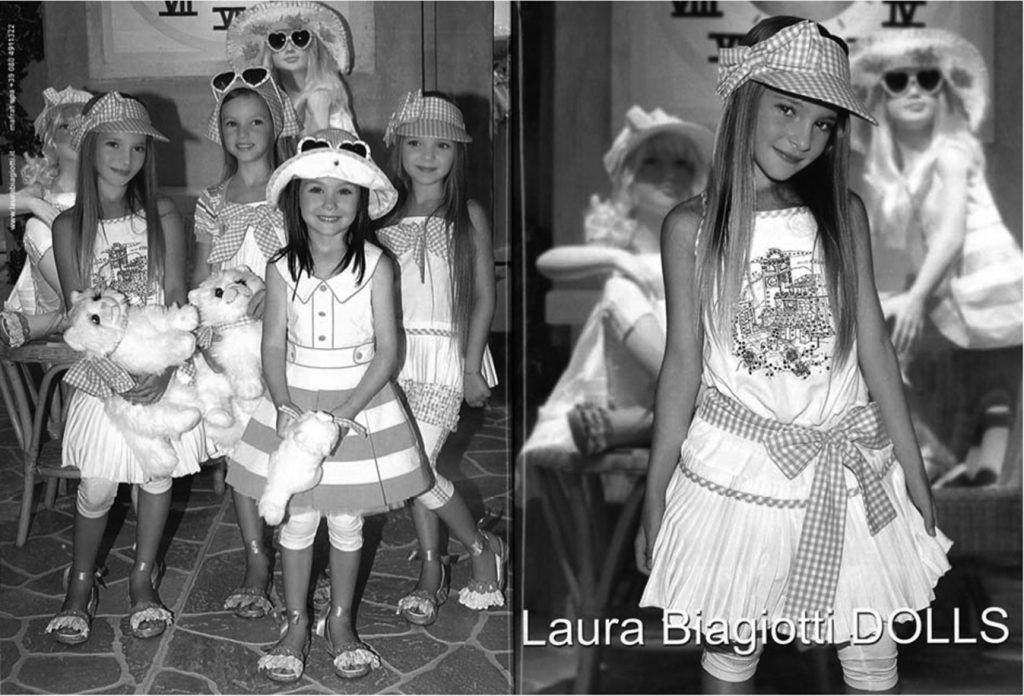
https://www.bloomsburyfashioncentral.com/products/berg-fashion-library/book/fashionable-childhood-children-in-advertising/heterosexual-innocence
This text analyzes examples of advertisements for children’s clothing and how they contribute to a culture that imposes heterosexuality and fetishizes gender differences from infancy. We are shown a variety of images of children in different magazines and the text breaks down how each emphasizes certain traits that are considered particularly feminine or masculine through the garments and the artistic choices made. Not only does this reinforce a rigid gender binary, the advertisements also rely heavily on implications of heterosexuality and association of childhood with innocence (and thus innocence as within the gender binary and heterosexuality). Boys are associated with the colour blue, they’re often shown as having more agency and acting more playful, while the girls are generally dressed in pink, appear more sweet and smiling, and are associated with dolls.
I found this article to be pretty interesting as it shows how often the type of clothing bought for children clearly involves implicit gendering and sexuality assumptions. Clothes for children are often not created with their use and practicality in mind, but rather with meanings relating to a specific type of sexuality- and these advertisements aim to push further the normalization of heterosexuality. This burden of a very specific gender and sexuality norm is the placed on children from the moment they start wearing garments and seeing advertisements. These expectations are now so deeply ingrained we have internalized them and they have become a normalized part of clothing in every stage of life- any alternative choices are often othered and seen as something unnatural.
Every image shown in the article has many elements that are subtly staged in ways suggest at problematic cultural assumptions about the gender binary- when girls and boys are posed together, the girl is often placed farther back, is wearing pink floral clothes, while the boy stands defensively forward- suggesting at their expected roles and future relationships. The images appear very natural, however due to them being in fashion magazines they are in fact very staged, making these ideals that much more insidious. Passiveness and activeness expectations are so often clearly displayed, “teaching sensitivity in girls and assertiveness in boys”, and furthering and commercializing dangerous Freudian theories of a radical gender gap and innate heterosexuality in children.
I really liked your commentary on the text. I definitely agree that the expectations are so deeply ingrained as children that many unconsciously follow these. It is interesting to see how strong the effect of commercialization on a groups like children who do not have a great interest in material things, like clothes. I’m not sure when this article was written – but in the last few years androgyny and androgynous clothing have definitely made an impact on mainstream fashion. Hopefully, in the near future this will extend to children clothes!
Donova and Aditi, this article and your reflections make me think of a series of other questions: why do you think gender and sexuality are so monitored, taught, and enforced in U.S. culture? Why is fashion such an important instrument for teaching gender and expressing gender? This article illustrates how powerful clothing is in fundamental elements of our identities – both in formation and in expression.